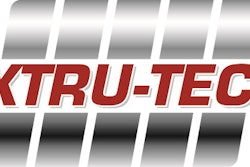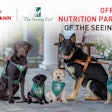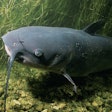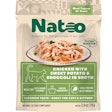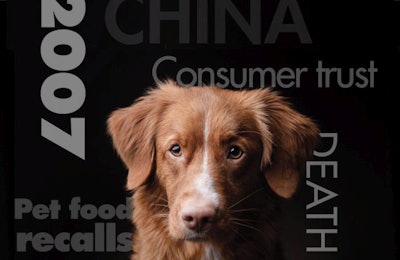
Ten years ago this March, hundreds of dogs and cats began dying after mysterious crystals blocked their kidneys. The stricken pets had all eaten pet food adulterated with melamine and cyanuric acid by a China-based ingredient supplier. The reaction to that tragedy still shapes the pet food industry today.
Pet food professionals from trade organizations, major brands, equipment manufacturers and others shared their observations on the effects of the 2007 pet food recalls with Petfood Industry. Beyond increasing scrutiny of pet food suppliers and testing for safety, consumer demands and legislative requirements were influenced by the melamine tragedy, they said.
Melamine and cyanuric acid pet food tragedy
On March 16, 2007, Menu Foods, a contract pet food manufacturer, issued its first recall of cuts-in-gravy-style dog and cat foods. Dogs and cats were dying of kidney failure, but no one knew the cause. The recalls would swell to more than 60 million containers from nearly 100 brands. Superpremium and economy brands alike were involved, but they had one commonality. Most had been thickened with what formulators thought was wheat gluten.
Instead of wheat gluten, the pet foods actually contained wheat flour spiked with melamine and cyanuric acid, industrial chemicals that may have made the flour seem to have the higher protein content of wheat gluten in tests. Neither chemical is highly dangerous alone, but pathologists eventually realized the two made a deadly pair.
After eating that adulterated food, dogs’ and cats’ bodies became chemistry labs where melamine reacted with cyanuric acid to form durable crystals that clogged pets’ kidneys. By April 2007, those crystals had caused kidney failure in 236 cats and 112 dogs, according to a survey of veterinarians by the American Association of Veterinary Laboratory Diagnosticians and Michigan State University. The final number of deaths is unknown, but consumer reports to the US Food and Drug Administration (FDA) suggest that approximately 1,950 cats and 2,200 dogs died.
FDA's Office of Criminal Investigations has since alleged that more than 800 tons of adulterated wheat gluten, valued at nearly US$850,000, came into the United States between November 6, 2006, and February 21, 2007. In February 2008, a federal grand jury in Kansas City indicted three Chinese nationals and a US citizen on multiple counts for importing the melamine-contaminated product and distributing it. Sally Qing Miller, a Chinese national, and American Stephen S. Miller pleaded guilty on June 16, 2009, to their roles as owners of ChemNutra, the company that distributed the tainted ingredient in the US.
Pet food industry reactions to melamine recalls
In the decade since the melamine tragedy, pet food professionals from all levels of the industry have adapted to make pet food safer, more transparent and more regulated than before, Cathy Enright, president and CEO of the Petfood Institute (PFI), told Petfood Industry.
“The melamine adulteration was unprecedented at the time in food manufacturing,” Enright said.
Five key categories in pet food manufacturing have been refined since 2007 to avoid being blindsided again, she said:
- Identify reliable sources of ingredients
- Design hygienic, secure facilities
- Increase inspection and testing of ingredients
- Monitor manufacturing parameters such as temperature, pH, pathogens and equipment
- Ensure safety, quality and traceability of finished products
Pet food trends influenced by melamine recalls
While the industry has advanced technologically, so too have consumers. In 2007, the internet became a global public forum for heartbroken and terrified pet owners who suddenly lost faith in the pet food industry. In the aftermath, internet blogs, chat rooms and social media increasingly influenced pet owners’ demands and concerns.
“It’s been 10 years since melamine, and also 10 years since most of us got broadband access,” said Enright. “We’ve got consumers asking more about what’s in their food and how it’s made, demanding greater transparency and asking for other ingredients.”
For example, after the 2007 recalls, there was a surge in “no wheat gluten” claims on pet food labels, said David Dzanis, DVM, PhD, CEO of Regulatory Discretion Inc. Likewise, the “made in the USA” claim may have become even more popular.
“When we were founding our company, we decided to source all our vitamins, along with our ingredients, from the USA after that scare about melamine hit,” said Sara Kuris-Morgan, founder and president of Frenchie’s Kitchen.
The American-made claim gets more regulatory scrutiny today than in the past, Dzanis said. Many products that do not meet Federal Trade Commission standards will use a qualified claim today, such as "made in USA with imported ingredients.” In those cases, pet food labels also might assert “no ingredients from China.”
“They have to disclose that not all ingredients are US-sourced, but want to clarify that at least they're not from China,” said Dzanis.
Legislative reaction to melamine tragedy
The demands of an internet-savvy, information-hungry public aren’t limited to pet food companies, Enright said. The public outcry over the 2007 recalls spurred lawmakers to focus more intensely on pet food regulation, as evidenced by Food Safety Modernization Act (FSMA) regulations passed in 2011.
As FSMA was being drafted, PFI worked with FDA to determine if the industry could meet the guidelines the agency was developing, Enright said. Approximately 3,000 hours were spent assessing the feasibility of pet food safety measures and ensuring that the requirements would achieve the mission of the law.
However, not all legislative tasks that arose in 2007 have been settled yet.
“The recall prompted passage of the FDA Amendments Act of 2007, which in part mandated that FDA develop its own pet food labeling regulations apart from AAFCO (Association of American Feed Control Officials),” said Dzanis. “However, although new regulations were supposed to be promulgated within two years, a proposed rule from FDA to do that has not been published to date.”
The science of safety in pet food extrusion
Before FSMA passed, the pet food industry began responding to the need for unadulterated pet food, said Galen Rokey, director of process technology at Wenger Manufacturing. Post-melamine tragedy, Wenger contributed to research at the University of Nebraska-Lincoln that correlated pet food extrusion temperature with control and reduction of Salmonella.
Another pet food extruder manufacturer, Extru-Tech, constructed a biosafety level-2 laboratory to study extrusion at Kansas State University. The lab features full production-scale equipment used to evaluate the safety of customers’ pet food formulations and procedures.
Extru-tech, with 1 Solution Group, and Wenger, with Corporate Project Services, formed separate entities to help manufacturers with pet food safety questions, including the design and retrofitting of facilities.
“Corporate Project Services continues to expand due to demand of these services, which in itself is a barometer of the industry needs in this area,” said Rokey.
Mars boosting pet food safety science
Mars Petcare also focused on the science of pet food safety after the 2007 tragedy, Simcha McIntosh, a public relations representative for the company, told Petfood Industry.
Mars maintains the Pet Care Central Laboratory in Aimargues, France. The company established the laboratory in part to develop and validate methods for identifying potential extraneous ingredients, such as melamine.
Pet and human food safety research and training is conducted at Mars’ Global Food Safety Center in Tennessee, USA, since opening in September 2015. The center facilitates research on pet food safety and quality control systems for pet food supply chains and production.
Future pet food recalls
Extruders aren’t the only technology that manufacturers are concerned about now. Smartphones and social media allow negative public opinions to spread even more rapidly now than in 2007, said Enright. Like the internet, social media adds to the ease with which consumers can find information, and misinformation, about pet food. Especially during a recall or other crisis, pet food professionals need to effectively communicate the truth to consumers.
“Our job is to help people figure out what’s real and what’s safe,” she said. “The pet food conversation is a crowded space now. To end the he-said she-said, provide actual information like research and surveys. … The challenge now is helping the public realize that recalls are part of food safety programs.”
Another tragedy like the melamine recalls is possible, said Dzanis. The deadly reaction between melamine and cyanuric acid was unexpected and so may be the next disaster. Although complete safety is impossible, increased diligence and implementation of FSMA regulations mitigate the risk, he said.






